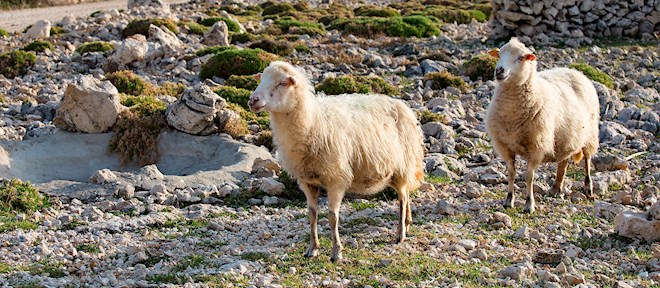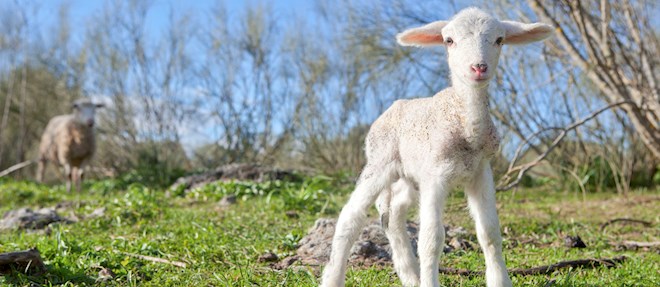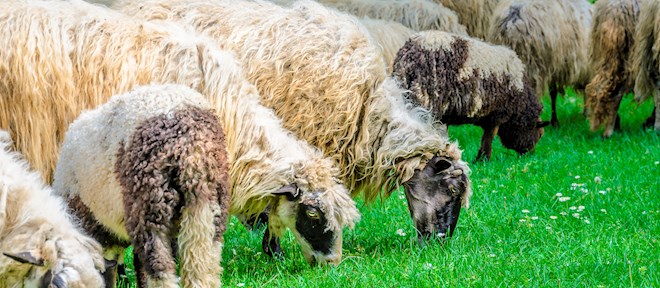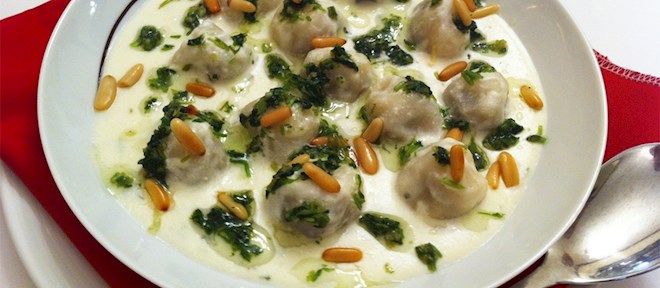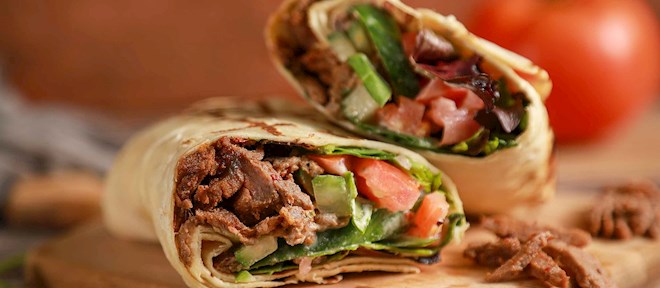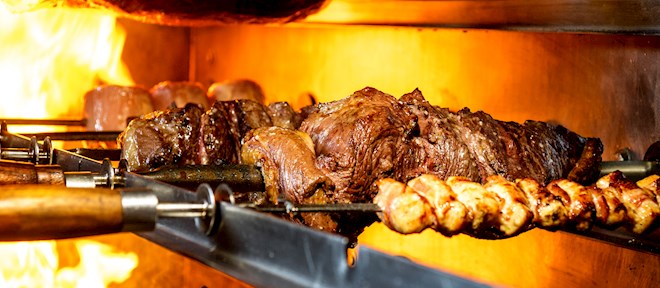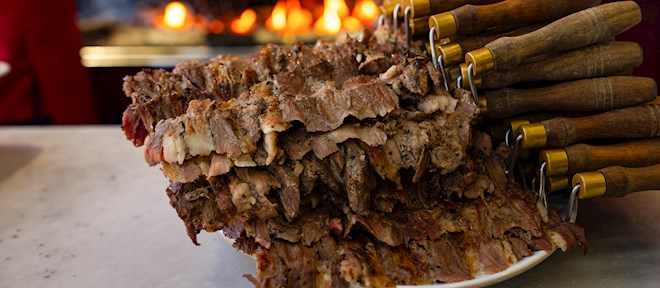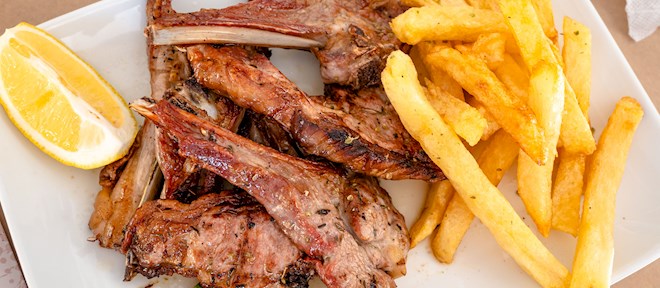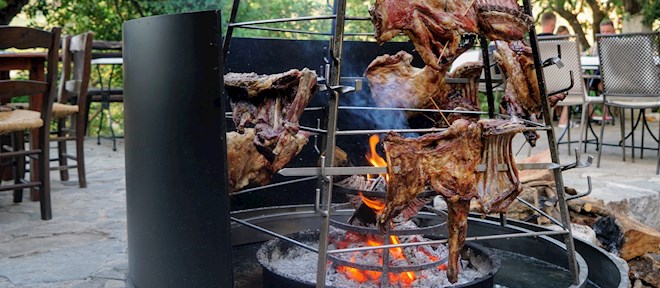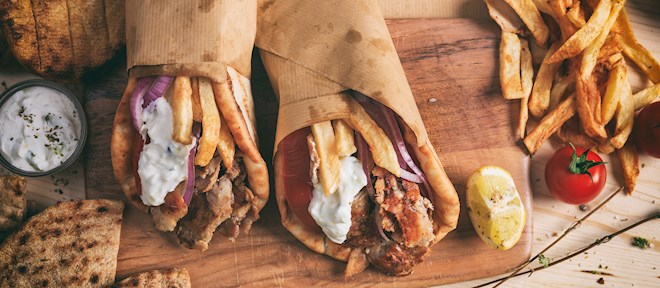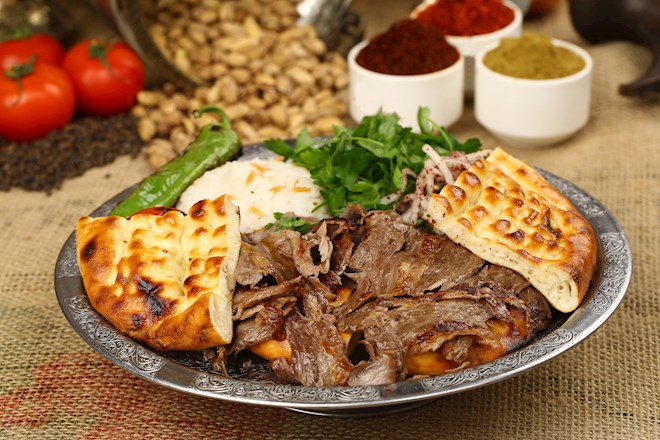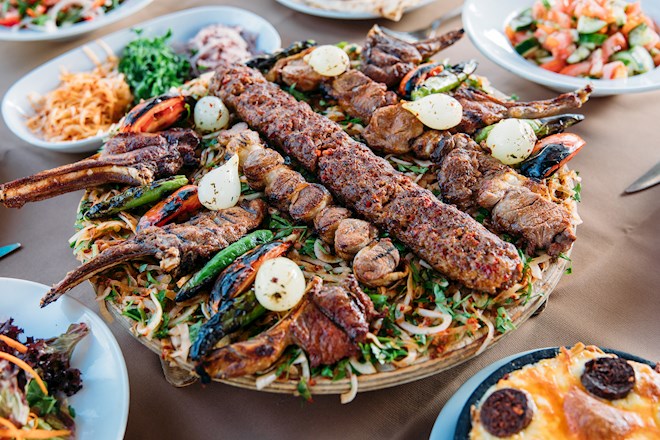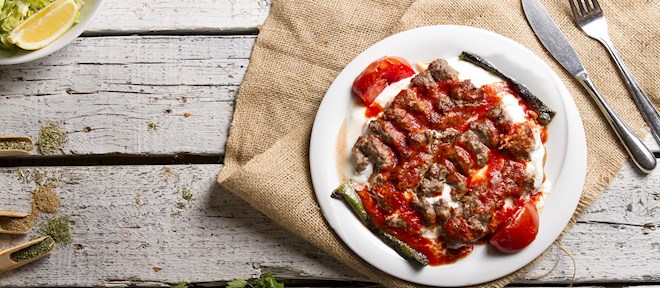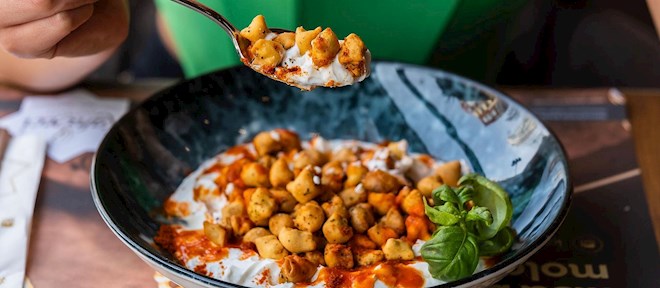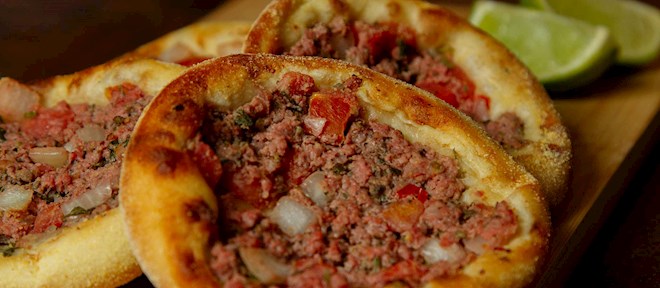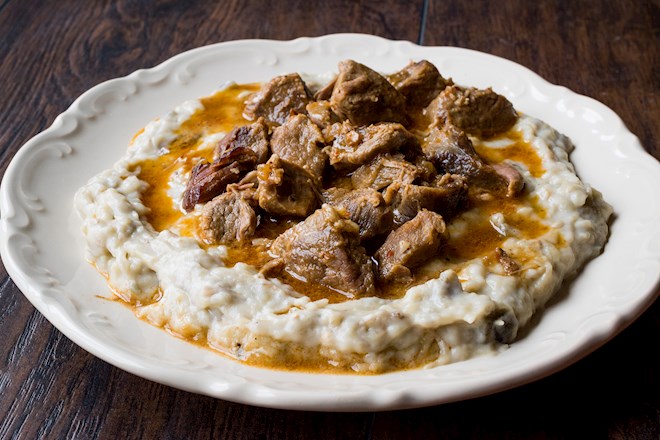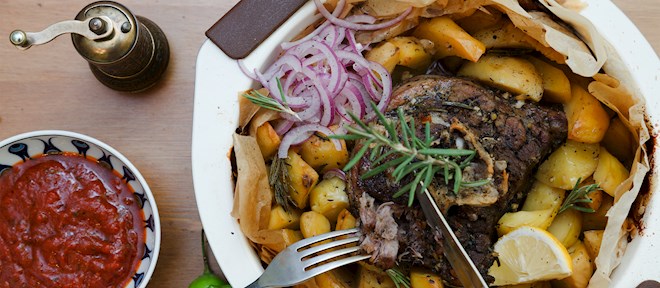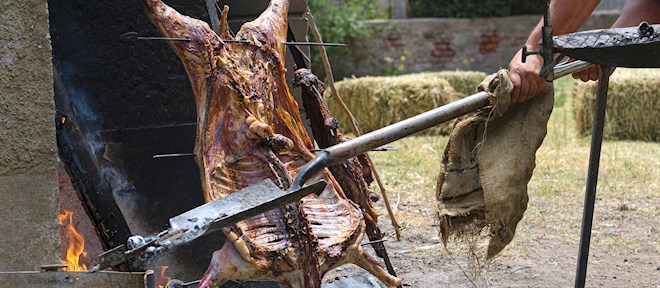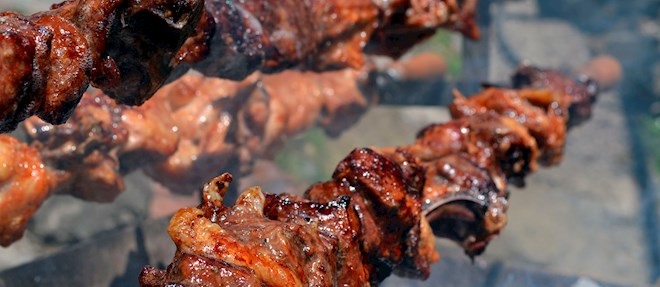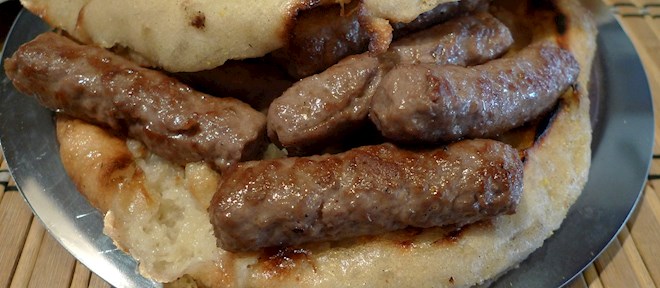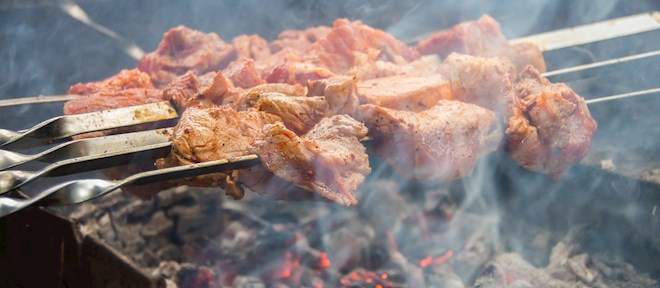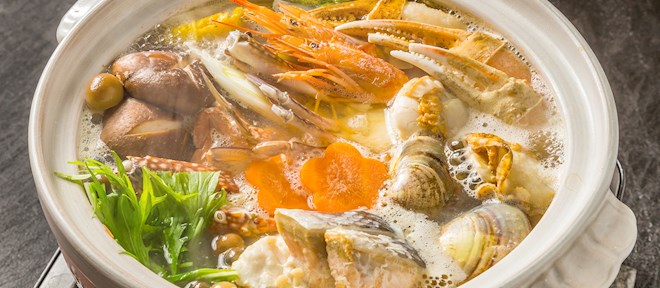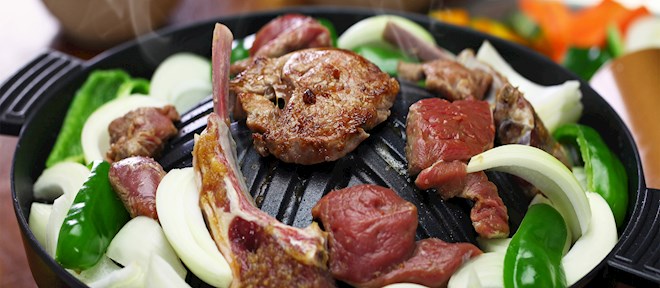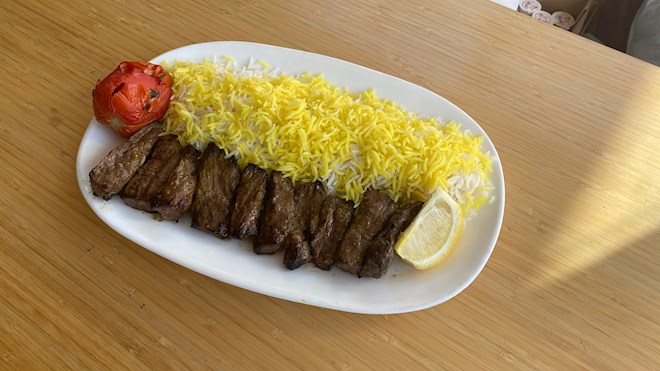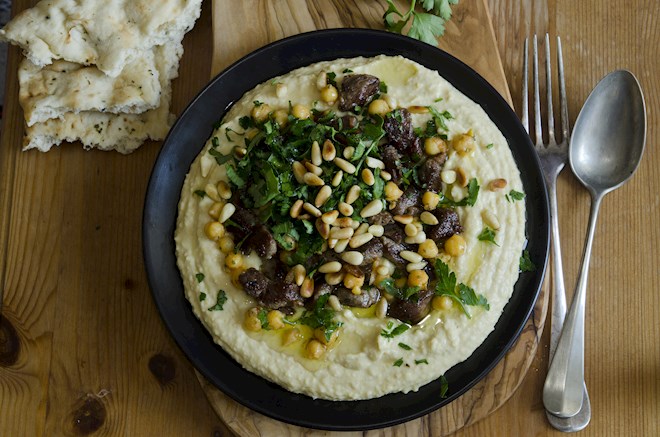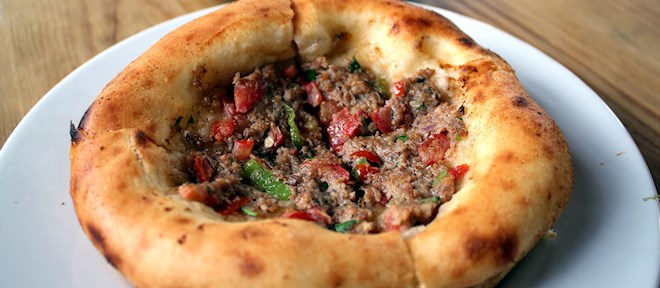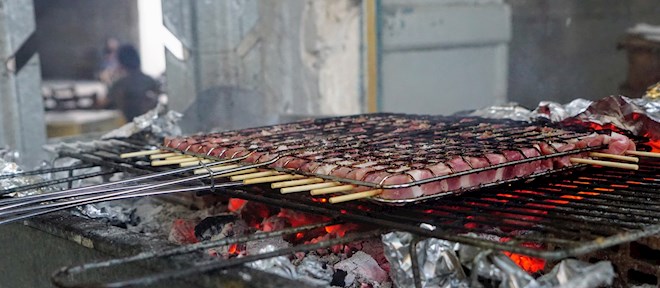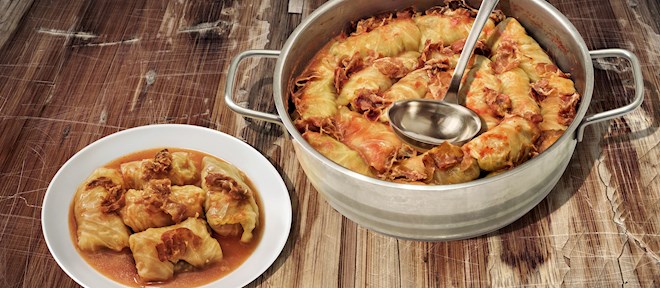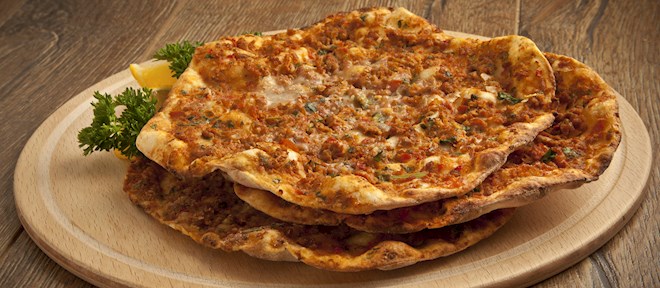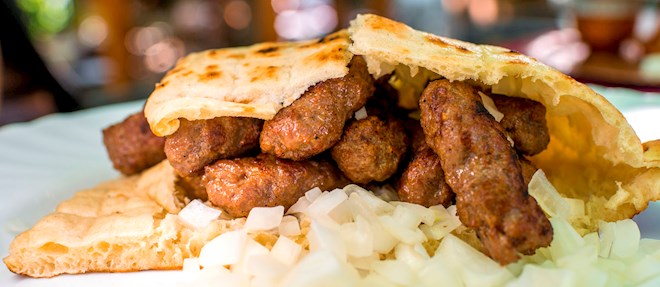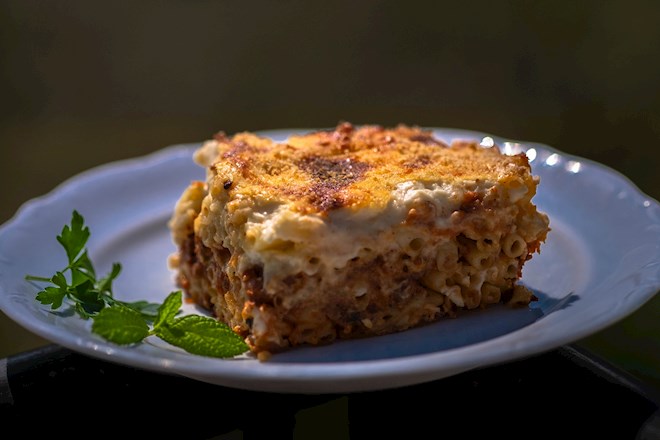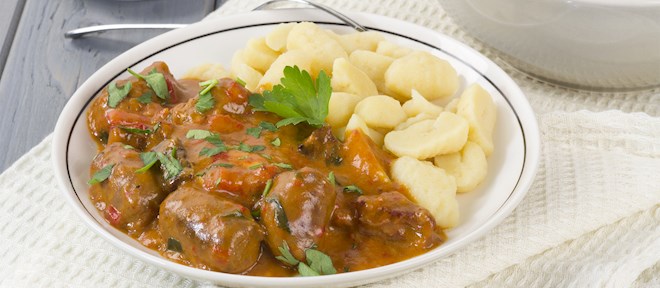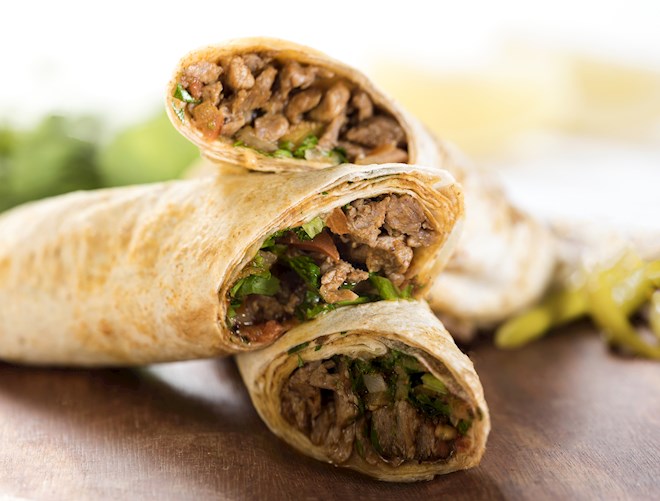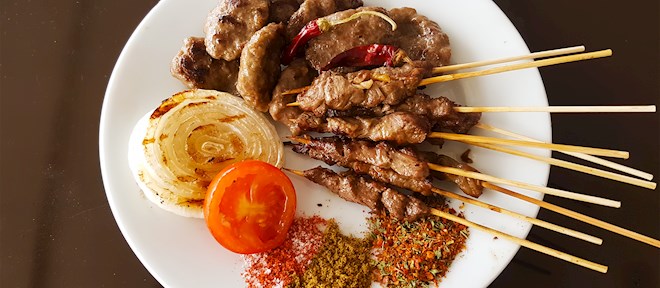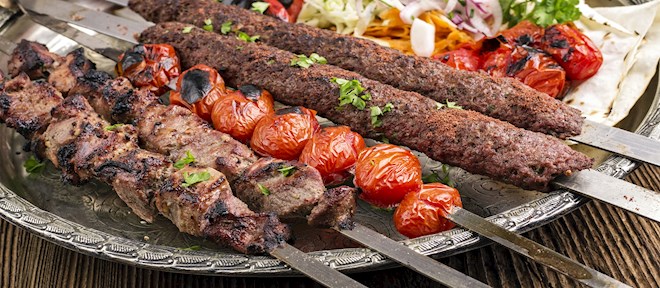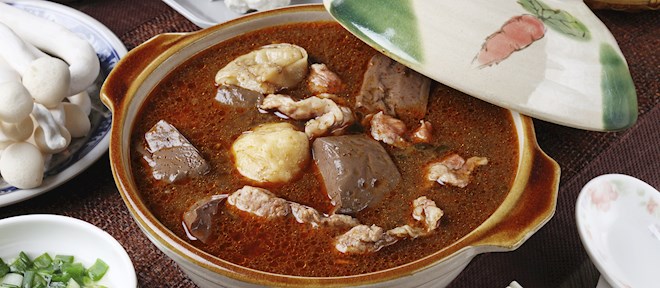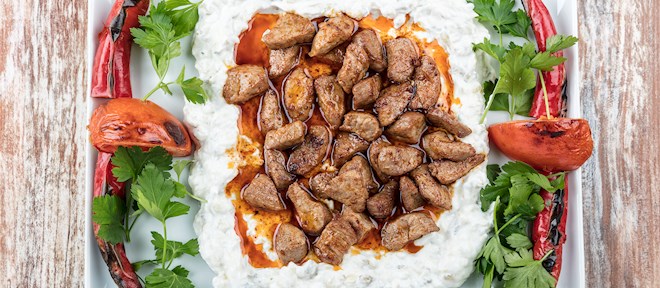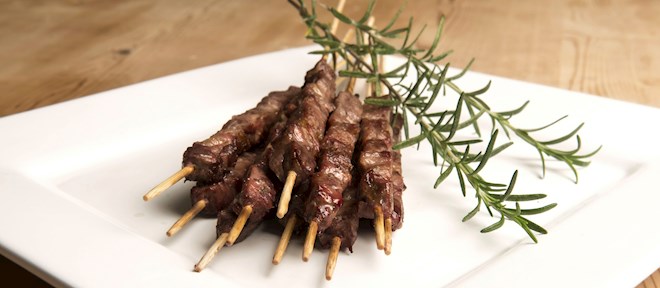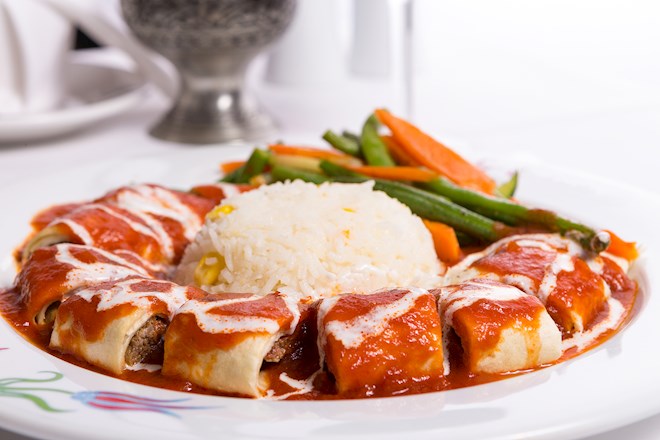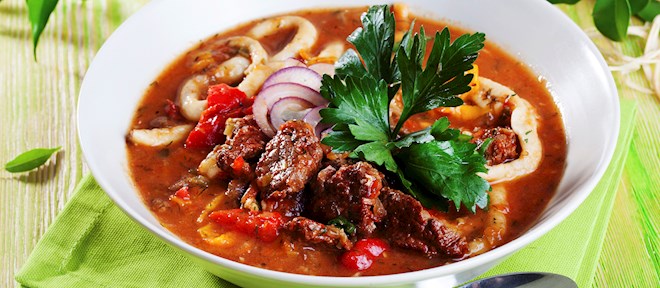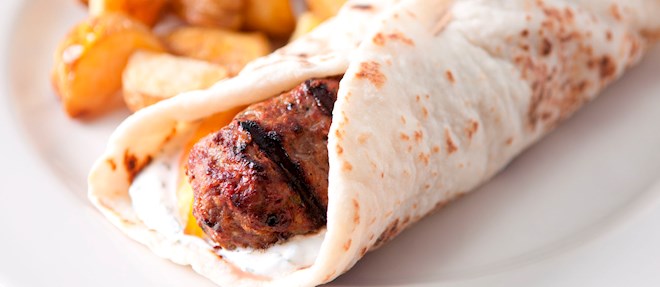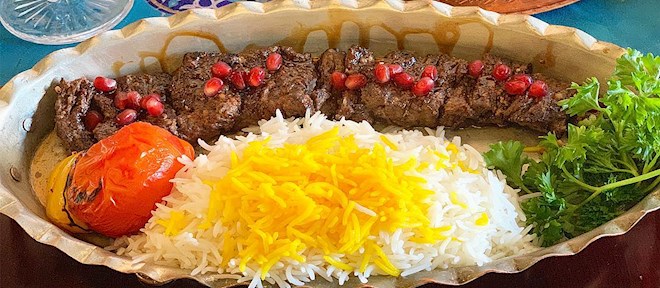Lamb
Lambs & producers

No results.
Try changing the search filters.Lambs

Paška janjetina
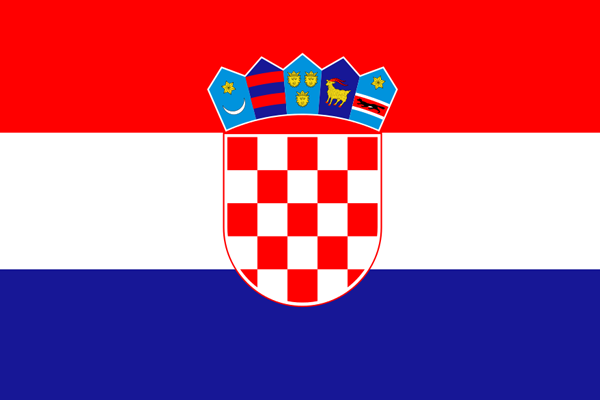
Paška janjetina is the meat of local lambs historically bred and pastured on the island of Pag. These lambs must weigh from 4 to 10 kilograms at the time of slaughter and they must not be more than 45 days old. The lambs are slaughtered mos... READ MORE
Cordero de Extremadura
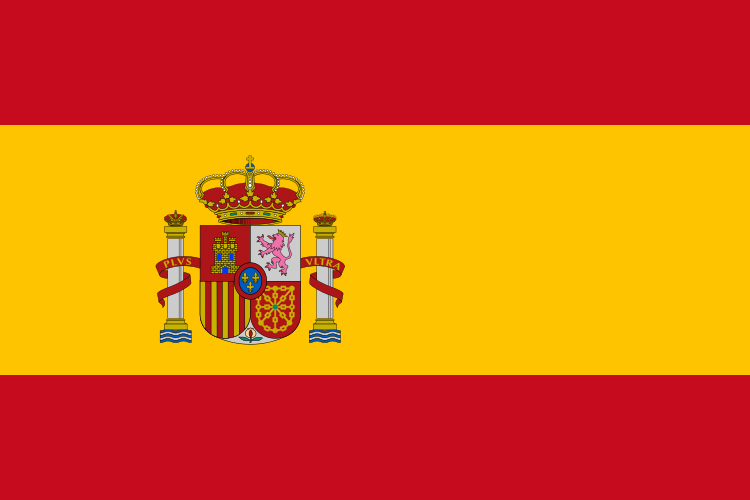
Cordero de Extremadura is a lamb born and pastured in the region of Extremadura. There, sheep are bred and raised according to a strict set of rules and guidelines that ensure that the meat of these lambs is of exceptional quality. The a... READ MORE
Lička janjetina

Lička janjetina is fresh meat originating from the region of Lika in Croatia. The meat is obtained from lambs of the Lika Curly (lička pramenka) breed, and they are fed sheep's milk, cereals, and meadow hay. During the summer, th... READ MORE
Arnáki Thassou
Arnáki Thassou is lamb coming from local sheep breeds born and reared on the island of Thassos. The animals are mainly free-range, and their diet, consisting of ewe’s milk and local aromatic herbs such as thyme, sage, rosemar... READ MORE
Borrego Serra da Estrela
This lamb comes from the Bordaleira breed, which has been raised in the districts of Coimbra, Guarda, and Viseu for centuries because of the quality of the milk it produces. The most famous product made with Serra da Estrela milk is S... READ MORE
Jagnięcina podhalańska
Jagnięcina podhalańska is lamb aged less than 60 days, from the breeds Polish mountain sheep, colored mountain sheep and Podhale zackels. When slaughtered, the final weight of the carcases must be between 4 and 8 kilograms. The u... READ MORE
Borrego do Baixo Alentejo
This variety of lambs comes from Merina and Campanifa breeds and cross-breeds between them raised in the districts of Beja, Setúbal, and Évora. This lamb owes its unique mellow flavor to a unique diet mainly consist... READ MORE
Cordero Manchego
Cordero Manchego is a lamb born and pastured in the provinces of Albacete, Ciudad Real, Cuenca and Toledo. These lambs are sixty to ninety days old and must weigh between 22 to 28 kilograms at the time of slaughter. Bred and raised in a w... READ MORE
Scotch Lamb
Scotch lamb is fresh meat from lambs that are born and reared in Scotland. It can be sold as a whole carcass or fine cuts of lamb - hind, saddle, fore, leg, loin and shoulder. Special attention is paid to the welfare and wellbeing of the ... READ MORE
Welsh lamb
Welsh lamb is meat from sheep breeds that are born and reared in Wales and is firm and white with good color and has a sweet, succulent flavor. It is sold as fresh meat, either as whole body or leg, shoulder, loin, saddle or cutlets.The f... READ MORE
Arnaki Elassonas
These lambs are born of ewes of indigenous Greek breeds, and are fed exclusively on their mother's milk. The antioxidants in the aromatic plants the sheep graze on give the ewe’s milk and, consequently, the lamb’s meat a distinctive fl... READ MORE
Agneau de Sisteron
Agneau de Sisteron is fresh meat from young lambs that are slaughtered when they are between 70 and 150 days old. The animals are born and reared in the Sisteron area of Provence in France, where they feed on milk and local fodder, which in turn p... READ MORE
Lofotlam
Lofotlam refers to lamb meat from lambs born, raised, and grazed in the pristine environment of the Lofoten Islands. The meat can be fresh or frozen, prime cuts, and various other cuts. The lambs have to be at least 16 kg and are between 4 and 10 ... READ MORE
Prés-salés de la baie de Somme
Prés-salés de la baie de Somme is fresh meat from lambs of the Suffolk, Hampshire, Roussin, Ile de France, Rouge de l'Ouest, Boulonnais and Vendéen breeds that are... READ MORE
Cordero de Navarra
Cordero de Navarra is a pure-bred Navarra and Lacha breed lamb born and raised in the province of Navarre. There are two different categories of these lambs; Cordero Lechal, baby lambs whose carcasses do not wei... READ MORE
Agneau du Bourbonnais
Agneau du Bourbonnais are lambs reared in the Allier region and the nearby French cantons since the 18th century. Originally reared for wool, Bourbonnais lambs are today raised for their succulent meat marbled with firm, white po... READ MORE
Lechazo de Castilla y León
Lechazo de Castilla y León is the meat of the lambs of the Churro, Castellano and Ojalado breeds produced in the Autonomous Community of Castilla y Leon. This meat is very tender, succulent and smooth in ... READ MORE
Connemara Hill lamb
Connemara Hill Lamb is lamb bred, born and reared in an area in the West of Ireland known internationally as Connemara. In the area, there are references from the 19th century about consuming this lamb when the blackface sheep that these lambs are... READ MORE
Dalmatian lamb (Dalmatinska janjetina)
Dalmatinska janjetina is the meat of autochthonous local lambs of dalmatinska pramenka breed, historically bred and pastured in Croatian Dalmatia, in Zadar Count... READ MORE
Shetland Lamb
Coming from the Shetland Isles, this uniquely flavored lamb is sold as whole fresh meat or as cuts. Shetland lamb meat is lean because the animals are free to roam over great distances of pastures, hills and shoreline when searching for f... READ MORE
Agnello del Centro Italia
Central Italian lambs come from the local Apennine sheep breeds, historically present in this area. Thanks to a special genetic heritage, the meat quality of these lambs is much higher compared to other breeds of the same age. The animals are born... READ MORE
West Country lamb
West Country lamb is fresh meat that is born and reared in the West Country area in England. It can be sold as a whole carcass, fine cuts or sides of lamb and goes well with herbs, olives, potatoes and with salsas. Although it must be bor... READ MORE
Icelandic lamb (Lambakjöt)
Icelandic lamb refers to the meat derived from the young sheep of the Icelandic breed. The lambs are typically raised in a free-range environment, grazing on Iceland's vast pastures, enriched by volcanic soil, and filled with nat... READ MORE
Ternasco de Aragón
Ternasco de Aragón is the meat of Rasa Aragonesa, Ojinegra de Teruel and Roya Bilbilitana lambs, raised in the provinces of Huesca, Teruel and Zaragoza in Aragon. The lambs must be fed in stables on their mothers&... READ MORE
Cordeiro de Barroso
This is fresh lamb meat taken from the Churra Galega, Bordaleira de Entre Douro, and Minho breeds of sheep grown in the district of Vila Real in Portugal. Barroso lamb has a great reputation, and it is also trad... READ MORE
Agnello di Sardegna
What speaks volumes about the ancient tradition of sheep breeding in Sardinia are the archaeological findings of lamb bones and cheesemaking tools which date back to the Nuragic civilization who lived on the island during the Bronze Age, circa 300... READ MORE
Borrego da Beira
Beira lambs are cross-bred from the Churra do Campo, Mondegueira, and Merino do Beira Baixa breeds. Beira lamb has a light pink color, a unique milky aroma, and a smooth and tender tex... READ MORE
Cordeiro Mirandês
This meat is taken from lambs of the rare Churra Galega Mirandesa breed of sheep. The meat is pink, tender, and extremely succulent, and its unique flavor is highly prized by gourmets and chefs. The lambs are reared on local pastures, whe... READ MORE
Cordeiro Bragançano
Bragançano lamb is fresh lamb meat from the Churra Galega Bragançana breed, defined by their rich wool coat and tall, thin and hairless limbs. The animals are highly adaptable, coming from the extremely cold and har... READ MORE
Borrego de Montemor-o-Novo
This is the meat of white Merino lambs raised in the Alentejo region. These lambs graze in the mountains and meadows, and mostly feed on wild herbs and grasses. The meat is characterized by its soft consistency and low fat content. This p... READ MORE
Orkney Lamb
Orkney lamb is obtained from lambs that are born, reared and put on market on the Orkney islands off the north shore of Scotland. It must be sold fresh and chilled, as a whole body or cuts of lamb. The unique North Ronaldsay sheep from wh... READ MORE
Abbacchio Romano
The name of Abbacchio Romano refers to male or female lambs of the following sheep breeds: Sarda, Comisana, Sopravissana, Massese Merinizzata Italiana and their crossbreeds, all born and bred within the Lazio re... READ MORE
Borrego do Nordeste Alentejano
This lamb comes from Merino sheep crossbreeds raised in the municipality of Portalegre. Sheep have been raised in this region for centuries, and they are used to produce both meat and wool. They are mostly fed on crop cuttings, wild herbs, and gra... READ MORE
Prés-salés du Mont-Saint-Michel
Prés-salés du Mont-Saint-Michel is fresh meat from lambs slaughtered before they are 12 months old, born, reared and slaughtered in the French regions of Manche and Ille et Vilaine.This meat is unique due to the fact that th... READ MORE
Borrego Terrincho
This is a Churra breed lamb raised in the districts of Vila Real, Bragança, Viseu, and Guarda. These sheep are used in the production of milk, meat, and wool. Flocks of Terra Quente consist of 150-200 sheep, and they are usually se... READ MORE
Cres lamb (Creska janjetina)
Creska janjetina is high-quality lamb meat from a sheep breed called Cres sheep, native to the island of Cres. This breed has been raised on the island for centuries, and it is nowadays reared primarily for the production of lamb. Regarde... READ MORE
Flinders Island Lamb
Flinders Island lamb is fresh meat obtained from lambs born and reared on Flinders Island. The lambs belong to British and European breeds and they either feed on milk or they're raised on salt grass pastures. Lamb produced from entirely ... READ MORE
Cordero Segureño
Cordero Segureño is a lamb born and reared in the area that consists of the provinces of Albacete, Almería, Grenada, Jaén and Murcia. These lambs are fed mostly on their mother's milk and plant-based supplements rich ... READ MORE
Agneau de l'Aveyron
Agneau de l'Aveyron is meat from young lambs weighing 17 kilograms on average, born and reared in the Aveyron region in France. The lambs come from a local breed of sheep called Lacaune which is traditionally reared in sheep-fold... READ MORE
Agneau du Périgord
Agneau du Périgord is fresh lamb meat from lambs slaughtered between 80 and 180 days of age, and weighing between 15 and 21 kilograms. They are born and reared in the Dordogne, Corréze, Lot and Lot et Garonne regions in Fran... READ MORE
Agneau du Quercy
Agneau du Quercy is lamb meat from the dry Quercy region in France, using lambs that have been slaughtered between 90 and 180 days of rearing. The lambs are reared on farms and feed on their mother's milk for at least 70 days before feedi... READ MORE
Agneau de Lozére
Agneau de Lozére is fresh lamb meat from the male and female Blanche du Massif breed of young lambs, their age right between suckling and adult, pasture fed lamb. They are born, reared and slaughtered in the French regions... READ MORE
Dishes with Lamb
Shishbarak

This combination of meat-stuffed dumplings and yogurt is common in Levantine cuisine. The dish consists of tiny dumplings—believed to have originated in Iran under the name joshpara—that are filled with a combination of meat a... READ MORE
Churrasco

Churrasco is a Brazilian barbecue method where juicy pieces, slices, steaks, and chops of beef, veal, lamb, pork, and chicken are placed on big skewers and grilled over wood fire. It started in the early 1800s when the Gauchos (European immigrants... READ MORE
Cağ kebabı

Cağ kebabı is a kebab variety originating from the Turkish city of Erzurum. It is made with lamb that is marinated with onions, salt, and pepper for about 12 hours, and the meat is then placed on a big horizontal skewer and cooked over a wood fire... READ MORE
Païdakia

Grilled lamb chops are a traditional Greek dish that is popular throughout the country and usually enjoyed as the main course. Lamb chops are usually marinated in various combinations of olive oil, lemon juice, and a variety of fresh herbs before ... READ MORE
Antikristo

Antikristo is a traditional technique of cooking meat on Crete. A young lamb (or a goat, on rare occasions) is cut into four pieces (called goulidia), salted, then placed on big wooden skewers that are arranged around the fire in a circul... READ MORE
Gyros

Gyros is one of the most popular Greek street food dishes, consisting of meat such as pork and chicken (in Greece) or lamb and veal (popular in other countries) cooked on a vertical spit. The meat is sliced in thin shavings and is then usually pla... READ MORE
Döner kebab

Döner kebab is a delicacy that is known throughout the world, consisting of grilled pieces of meat that are shredded from a vertical skewer. The meat is typically seasoned with fresh herbs and spices. Originally, the meat used in döner w... READ MORE
Adana kebap

Adana kebap is a popular skewered meat dish named after one of the most famous kebab cities in the country, Adana. This kebab is made with ground lamb and tail fat that are kneaded together with garlic, onion, paprika, and hot red pepper flakes, g... READ MORE
İskender kebap

A specialty of the city of Bursa, İskender kebap is named after a butcher called İskender Efendi, who first prepared this flavorful dish. It consists of thinly sliced lamb that is grilled and combined with a spicy tomato sauce and pita bread, whil... READ MORE
Manti

Manti are traditional Turkish dumplings filled with spiced ground meat and onions. The dumplings are most commonly topped with a sauce consisting of yogurt and garlic. The name of the dish is derived from mantu, meaning dumplings... READ MORE
Sfiha

Sfiha, or lahm bil ajĩn (lit. meat on dough) is an Arabic specialty that dates back to the 15th century, when it first appeared in today's Eastern Lebanon. The traditional open-faced meat pie is popular throughout the Arab region, its mai... READ MORE
Hünkar beğendi

Hünkar beğendi is a traditional dish consisting of a flavorful lamb stew that is served on top of a creamy roasted eggplant purée. The purée is often thickened with milk and cheese, while the whole dish is sometimes topped with ... READ MORE
Kleftiko

Kleftiko is a typical Greek dish that is commonly prepared at festive events and celebrations, consisting of a succulent piece of lamb or goat meat that is wrapped in foil and baked in airtight ovens. Also spelled as klephtiko, the name c... READ MORE
Cordero asado

Cordero asado is a popular Castillan dish made by roasting a whole lamb over an open fire. The lamb is usually marinated with lemon, garlic, and various fresh herbs such as rosemary and thyme. Once it is properly cooked, cordero asado is typically... READ MORE
Souvla

This Cypriot-style barbecue dish is made with seasoned and marinated meat, typically lamb, pork, or chicken, which is placed on a long skewer and slow-roasted over an open fire. The marinating process makes the meat incredibly tender and succulent... READ MORE
Travnički ćevapi

This ćevapi variety is made in the city of Travnik in Bosnia and Herzegovina. The ćevapi are made with a combination of beef, veal, and lamb, with the addition of salt, pepper, and a bit of baking soda. When grilled, the meat is often brushed with... READ MORE
Khorovats

Khorovats is a unique Armenian barbecue method where the meat is first placed on a set of high-quality skewers called shish and shampoors, then grilled on mangal, a grill often shared among neighbors, or less commonly, b... READ MORE
Nabemono

Nabemono is the name encompassing numerous Japanese one-pot dishes, cooked with a variety of ingredients. In restaurants, they are usually prepared tableside and served to the guests. The name derives from the traditional pot in which the ingredie... READ MORE
Jingisukan

Jingisukan is a Hokkaido-specialty consisting of grilled mutton or lamb. The dish is always prepared tableside on the convex-shaped grills. The guests are served with sliced meat, which can be plain or marinated, and are then encouraged to grill t... READ MORE
Kabab chenjeh

Kabab chenjeh is a traditional meat dish originating from Iran. This type of kebab is usually made with a combination of lamb, cherry tomatoes, olive oil, lemon juice, salt, and pepper. The meat is cut into cubes and marinated in a mixture of lemo... READ MORE
Hummus kawarma

Hummus kawarma is a traditional version of hummus. In order to prepare it, freshly made hummus is topped with fried pieces of lamb. The hummus is made from chickpeas, tahini, lemon juice, crushed garlic, and cold water, while the kawarma consists ... READ MORE
Dande kabab

Dande kabab is a traditional meat dish originating from Kermanshah. This type of kebab is usually made with lamb ribs that are cut into large pieces, placed on skewers, and then grilled. As the meat cooks, it is brushed with a sauce consisting of ... READ MORE
Cantık pidesi

Cantık pidesi is a traditional flatbread from Bursa. The dough for cantık pidesi is similar to other pide doughs, made from flour, water,... READ MORE
Testi kebab

Testi kebab is a traditional kebab variety made by filling a clay pot with a mixture of meat (usually lamb, but sometimes beef or chicken), vegetables (such as tomatoes, peppers, onions, and garlic), and various spices. This dish is particularly p... READ MORE
Souvlaki

Souvlaki is one of the most popular Greek dishes, consisting of small cubes of skewered and grilled pork, chicken, lamb, or beef. It is a popular fast food item that is usually served in souvladzidika, small eateries that also often serve... READ MORE
Sarma

One of the staples of traditional Turkish cuisine, sarma consists of a filling that is snugly surrounded by leaves or leafy vegetables. There are numerous versions of this dish but the mixture typically combines ingredients such as minced meat, ri... READ MORE
Lahmacun

Even though lahmacun is popularly nicknamed Turkish pizza, it's origin is disputed and can be traced to Armenia, Syria, Lebanon, and Turkiye. It can be found at numerous street stalls as well as in virtually any traditional restaurant, bu... READ MORE
Ćevapi

Despite their clear Turkish provenance, Bosnian ćevapi are a source of great national pride and the country's favorite dish. These tiny, hand-rolled minced meat sausages are commonly made with ground beef - or a mix of beef mince with other meats ... READ MORE
Pastitsio

Although the Greeks did not invent pasta, they have been consuming similar foods since ancient times. Actually, some terms we usually associate with Italian food like lasagna and macaroni are thought by some to be of Greek origin... READ MORE
Pörkölt

Pörkölt is Hungary's national stew, its name derived from the word pörkölni, meaning to roast or singe. The stew is made from meat such as beef, lamb, pork, or chicken, simmered in a red sauce with lo... READ MORE
Tantuni

Tantuni is a traditional street food dish from Mersin, consisting of thinly sliced beef or lamb that is seasoned with Turkish spices and herbs, usually cooked with onions and tomatoes. The combination is cooked in specially designed tantuniREAD MORE
Çöp şiş

Originating from Türkiye’s Aegean region, çöp şis is a kebab variety which, in modern Turkish, could be translated as trash shish or garbage shish. Despite the indecent connotationsREAD MORE
Kabab koobideh

Kabab koobideh is the Iranian term for a variety of minced meat kebabs usually prepared with onions and finely ground lamb, beef, or chicken. The meat is seasoned with various spices, formed around metal skewers, then grilled on charcoal barbecues... READ MORE
Sichuan hot pot

Sichuan hotpot is a numbingly hot and spicy dish made by poaching raw ingredients in a pot of boiling broth. The ingredients might include sliced meat, offal, seafood, vegetables, noodles, and most importantly, Sichuan peppercorns. Consuming hotpo... READ MORE
Alinazik kebab

Alinazik is a Turkish kebab variety originating from Gaziantep. It consists of char-grilled and puréed eggplants that are combined with garlic yogurt sauce, then topped with chunks of meltingly sweet lamb. The meat is typically stewed with ... READ MORE
Arrosticini

Also known as arrustelle or rustelle in local dialect, arrosticini are skewers made with castrato, the meat of castrated sheep, mutton, or sometimes even lamb, traditionally grilled on an elongated, charcoal-fired brazie... READ MORE
Beyti kebab

Beyti is a traditional kebab variety originating from Istanbul. It consists of ground lamb or beef that's seasoned with spices, grilled on a skewer, then served wrapped in lavash, cut into pieces, and topped with tomato sauce and yogurt. The groun... READ MORE
Lagman

Lagman or latiaozi is a dish from Central Asia with possible roots in Xinjiang, a northwestern region of China. The name translates to pulled noodles or hand-stretched noodles, denoting the main feature of the dish. Since there i... READ MORE
Sheftalia

This traditional Cypriot sausage is made from a mixture of minced pork and lamb, chopped red onion, and parsley wrapped in caul fat, a thin fatty membrane that lines the stomach of cows, sheep, and pigs. There are two theories as to how the dish g... READ MORE
Lechazo

Lechazo is a Spanish dish consisting of a roasted suckling lamb. In order for the lamb to classify as lechazo, it must weigh between 5 and 7 kg and its age cannot be more than 20 to 30 days. The lamb must be fed only on its mother's milk, hence th... READ MORE
Kabab torsh

This Iranian kebab variety is traditionally associated with the provinces of Gilan and Mazandaran. The kebab is usually made with lean cuts of beef or lamb which are marinated in a flavorful combination of pomegranate molasses, walnuts, garlic, pa... READ MORE
